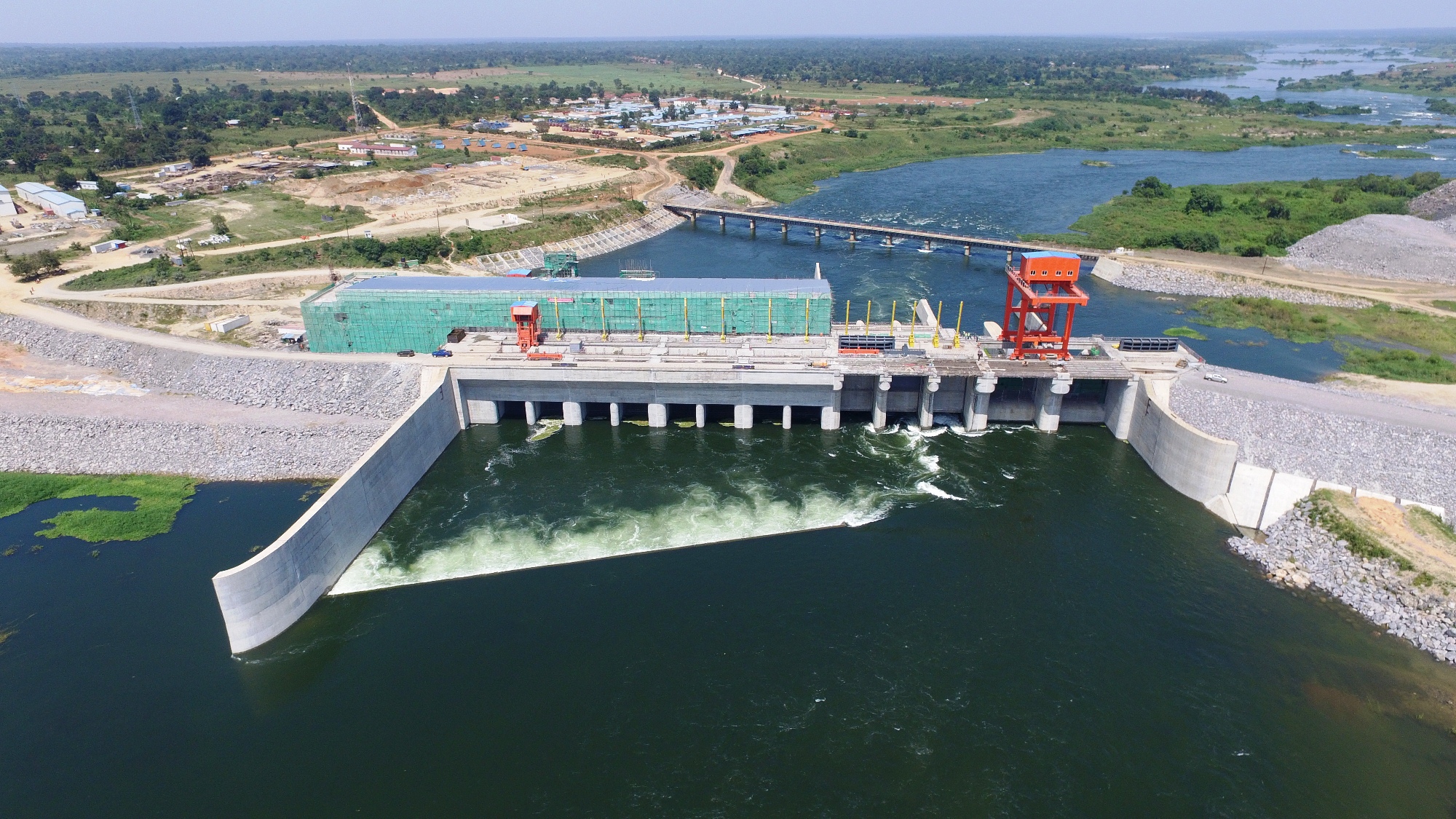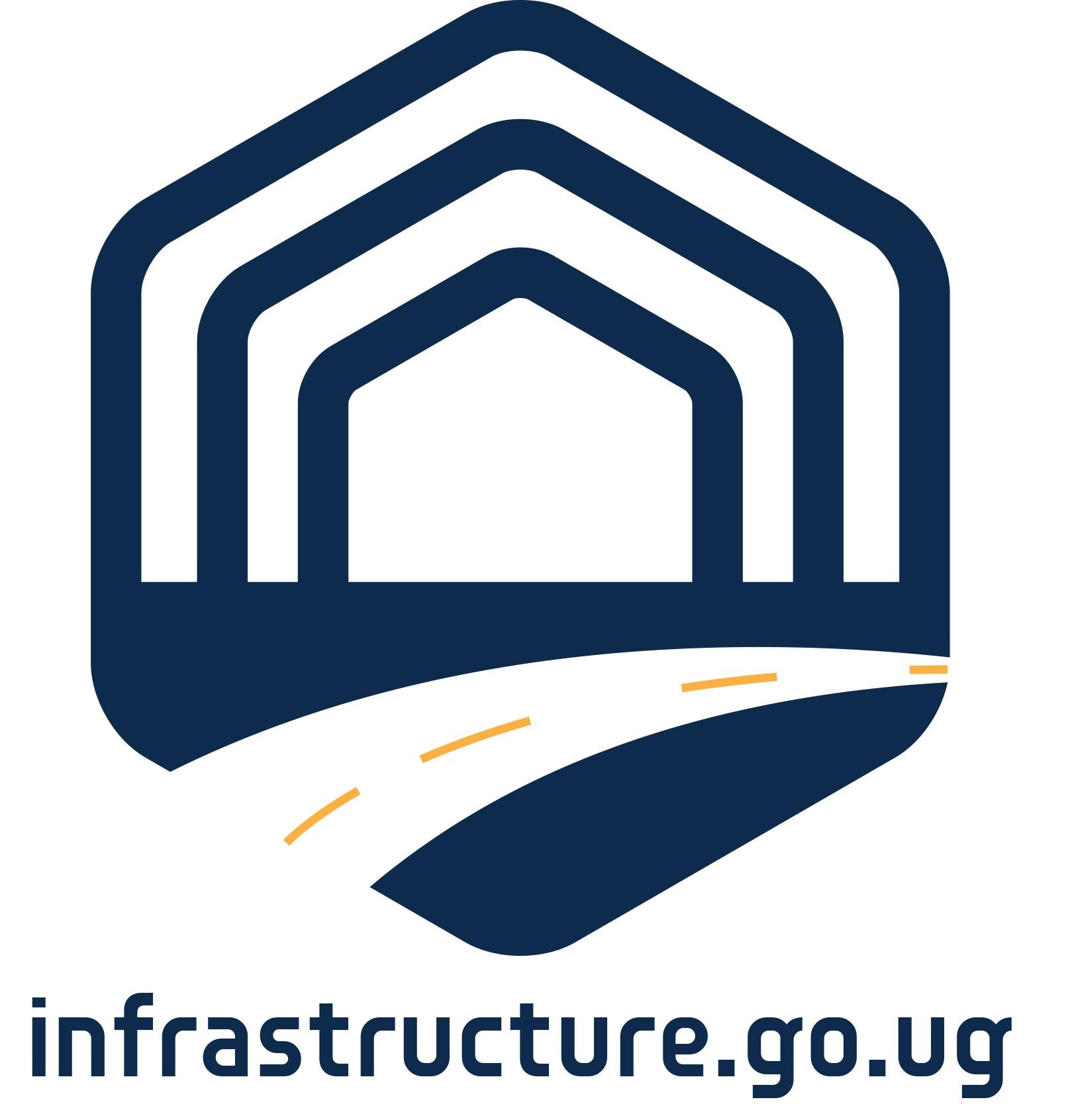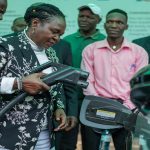Share
Power Generation
Hydropower generation will soon stand at 1,868MW with the commissioning of Karuma. Construction of Isimba Dam (183MW) and Ayago II Dam (42MW) was completed. Karuma Dam (600MW) works were at 98% by July 2020, while the construction of substations and transmission lines is at 80%. The following small dams were commissioned;
| TABLE 1: COMMISSIONED DAMS | ||
| DAM | MEGAWATTS | |
| 1. | Kikagati | 14.0 |
| 2. | Kyambura | 7.6 |
| 3. | Lubilia | 5.4 |
| 4. | Muvumbe | 6.5 |
| 5. | Ndugutu | 5.9 |
| 6. | Nkusi | 9.6 |
| 7. | Nyamagasani I | 15.0 |
| 8. | Nyamwamba | 9.2 |
| 9. | Rwimi | 5.54 |
| 10. | Sindila | 5.24 |
| 11. | Situ II | 16.5 |
| 12. | Situ1 | 5.0 |
| 13. | Tororo Solar | 10.0 |
| 14. | Waki | 4.8 |
| TOTAL | 120.28 | |
Small Dams Under Construction
| TABLE 2: DAMS UNDER CONSTRUCTION | ||
| DAM | MEGA WATTS | |
| 1. | Achwa I (41MW) | 41.0 |
| 2. | Bukinda (6.5MW) | 6.5 |
| 3. | Busitema University Solar Power (4MW) | 4.0 |
| 4. | Kakaka (4.6MW) | 4.6 |
| 5. | Muyembe (6.9MW) | 6.9 |
| 6. | Muzizi (44MW) | 44.0 |
| 7. | Nyagak III (5.5MW) | 5.5 |
| 8. | Nyamagasani II (6MW) | 6.0 |
| TOTAL | 118.5 | |
Rural Electrification
Access to electricity is at the heart of socio-economic development. It impacts on a wide range of development indicators, including health, education, food security, gender equality, livelihoods and poverty reduction.
Whoever grew up in a village remembers a life without electricity. Some villages are now connected to the national grid and have steady supply of power. More villages are to be connected over the next five years.
There was a time of intermittent power cuts or load shedding. People had become used to that and it became a way of life. Today, any slight failure in power supply upsets everyone and is considered a big issue. This confirms that there is a steady supply of electricity, which people are now used to. NRM knows that providing electricity to all Ugandans is about serving humanity.
Without electricity, the provision of modern public health services becomes a daunting task. With lights at night, all children can study under similar conditions. Many now have TVs, not only for entertainment, but also for learning more about the rest of the world. With electricity, the use of electrical appliances such as fridges is on the rise. Furthermore, appliances like fridges, salon equipment and cookers are being used by many Ugandans to generate incomes, which explains the need for a steady supply of electricity.
Electrifying Districts
By 1986, only 20 (about half) out of 39 district headquarters were connected to the national grid. Today, only four (Kaabong, Karenga, Kotido and Buvuma) out of 135 districts are not yet connected.
Work on taking power to Kaabong and Kotido is ongoing and will be completed by December 2020. The Government is also going to look for approximately Ush45 billion required to supply both Buvuma and Sigulu islands with electricity.
To increase rural electrification, the government has constructed over 14,820km of Medium Voltage
There was a time of intermittent power cuts or load shedding. People had become used to that and it became a way of life. Today, any slight failure in power supply upsets everyone and is considered a big issue. This confirms that there is a steady supply of electricity, which people are now used to. NRM knows that providing electricity to all Ugandans is about serving humanity.
Without electricity, the provision of modern public health services becomes a daunting task. With lights at night, all children can study under similar conditions. Many now have TVs, not only for entertainment, but also for learning more about the rest of the world. With electricity, the use of electrical appliances such as fridges is on the rise. Furthermore, appliances like fridges, salon equipment and cookers are being used by many Ugandans to generate incomes, which explains the need for a steady supply of electricity.
In order to increase the consumption of electricity, NRM is making connections to homes easier and affordable
(MV) power lines and approximately 10,000km of Low Voltage (LV) power distribution lines. This has translated into the connecting of over 1,000,000 consumers onto the national grid.
According to the Uganda Bureau of Statistics Baseline Survey of 2019, access to electricity has improved from 20% (on grid) in 2015/16 (it was 7% in 1986) to 51% (on and off grid) in 2019/20. The 51% comprises 24% access to the national grid and 27% access through off- grid (through mini-grids, solar home systems and others).
In addition, about 6,000km of MV power lines and 5,000km of LV power lines are under implementation with 1,500km of MV power lines and 2,000km of LV power lines under procurement.
Electrifying Sub-counties
In October 2019, NRM commenced on the Project for Bridging the Demand Supply Balance Gap through the Accelerated Rural Electrification Programme that is supplying electricity to sub-county headquarters.
Under the project, over 4,000km of MV networks and over 6,000km of LV networks shall be constructed to provide electricity to 620 unserved sub-county headquarters countrywide. These include 558 sub-county headquarters, 52 town councils and 10 division headquarters.
Construction started in October 2019 in 20 districts: Kumi, Kapchorwa, Namutumba, Isingiro, Kassanda, Kyegegwa, Kibaale, Omoro, Otuke, Madi-okolo, Arua, Adjumani, Kiboga, Kanungu, Bundibugyo, Agago, Buyende, Bukedea, Kole and Apac.
Easing connecting power to homes
In order to increase the consumption of electricity, NRM is making connections to homes easier and affordable. Under this policy which started in 2018, the Government subsidises the cost of electricity connection materials, enabling citizens who are ready for electricity consumption to benefit. Over 300,000 household connections are targeted annually.
Grid Intesification
Alongside these grid extension projects; the Government is also implementing grid intensification and densification projects aimed at connecting areas with suppressed demand within the existing national grid footprint. These projects target the connection of underserved load centres and centres within a 2km footprint of the existing grid. This will be through transformer injections, expansion of the LV reticulation network and short expansions of the medium voltage network, mainly targeting highly populated areas such as municipalities, divisions and busy trading centres countrywide.
NRM is also facilitating the evacuation of power from various small hydropower plants countrywide through the get-fit programme. Over 70% of these projects have been completed, with the remaining currently under construction and shall be due for completion by the end of 2020.




